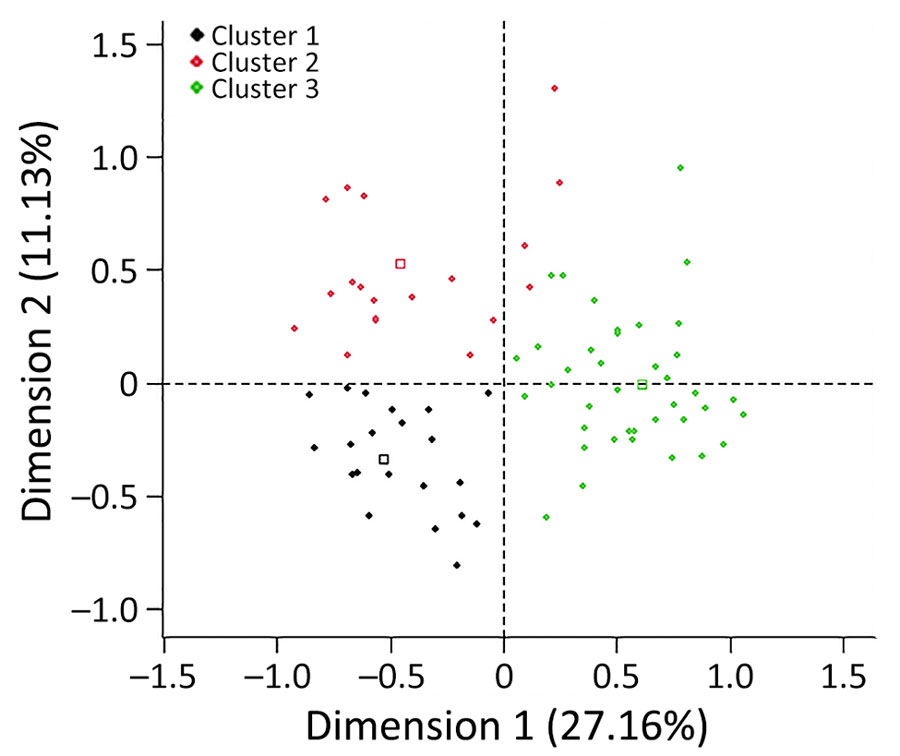Volume 31, Number 9—September 2025
Research
Drivers of Crimean-Congo Hemorrhagic Fever in Natural Host and Effects of Control Measures, Bulgaria
Figure 2

Figure 2. Farm typologies identified after hierarchical cluster analysis in study of drivers of Crimean-Congo hemorrhagic fever in natural host and effects of control measures, Bulgaria. First, multiple correspondent analysis was performed to transform correlated variables into a small number of synthetic uncorrelated factors. Hierarchical cluster analysis was then used to group farms into clusters according to their level of similarity with respect to the factors created by the multiple correspondent analysis. Data were collected during October 2017 from 120 commercial sheep farms in Burgas and Kardhzali Provinces in Bulgaria. Typology (cluster) 1 (n = 54) comprised mixed farms, most of which were located in Kardhzali Province. Lambs were kept outdoors during the day and indoors at night, and all farms reported applying tick control by spraying animals with acaracides. Typology (cluster) 2 (n = 26) comprised most of the meat farms located in either Kardhzali or Burgas Province. Most farms kept lambs outdoors during the day and indoors at night. One third of those farms did not use tick control measures for animals. Typology (cluster) 3 (n = 40) comprised most of the dairy farms; most were located in Burgas Province. Lambs were kept indoors at all times until weaning. Most farms reported applying tick control either by dipping or spraying animals with acaracides.